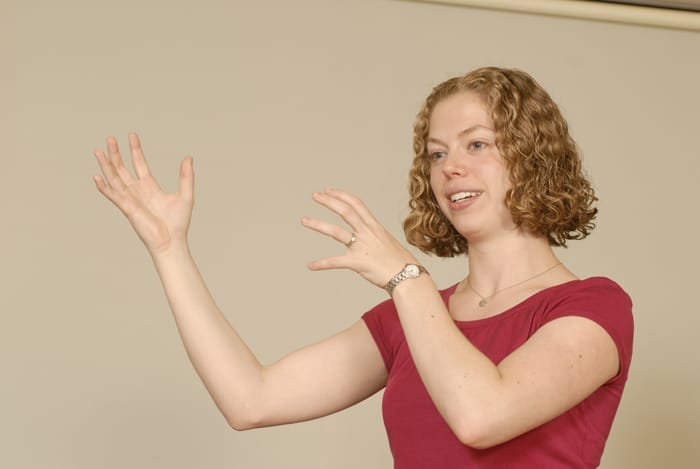Something like a scholarly version of the Energizer Bunny’s drum, Wharton Professor and LDI Senior Fellow Katherine Milkman‘s 2014 “Fresh Start” study just keeps beating its way across the country’s media outlets every January, year after year.
Now ending its sixth year of widespread media play as a New Year’s resolution-related news feature, the study’s latest appearances include the Washington Post, The New York Times, CNBC.com, ABC News, Science magazine, Inc. magazine, Psychology Today, PsychCentral, a variety of regional newspapers, blogs like the Princeton Alumni Weekly, Professor Michael Roberto’s Blog and Medium.com’s Coffee & Junk Blog.
Cultural Phenomenon
Beyond just being another academic dissemination success, the “fresh start” behavioral economics study has woven itself into the weft of American culture, guaranteeing its ability to make itself known to ever widening audiences across the continent as well as around the world.
“This has really been more about luck than any conscious media-planning dissemination strategy,” said Milkman of the ongoing experience. “When the study was approaching completion, I didn’t think, relative to all the other work I’ve done, it had the potential for dramatic media pickup. But I later came to realize that most research findings aren’t tagged to a day or date that makes journalists think about them at a certain time every year, year after year.”
The study, entitled, “The Fresh Start Effect: Temporal Landmarks Motivate Aspirational Behavior” was conducted by Milkman, PhD and Professor of Operations, Information and Decisions (OID) at the Wharton School; Hengchen Dai GRW 15, who received her PhD in OID at Wharton in 2015 and is now an Assistant Professor of Management and Organizations and Behavioral Decision Making at UCLA; and Jason Riis, PhD, former Wharton Lecturer and Research Scholar and now Chief Behavioral Scientist at Behavioralize.
Behavioral Nudge
The work found that “fresh starts” on specific event dates—like a birthday, an anniversary or the beginning of a school semester—can enable people to be more effective at setting and achieving behavioral-changing goals. The authors call such events “temporal landmarks” and say they cause many people to evaluate their lives and more seriously consider new directions. Thus, these milestone events provide potential pivots for “nudging” or influencing an individual’s behavior.
The “Fresh Start Effect” was originally published in the journal Management Science online in June 2014 and in print in October of that year.
Seven months before that, in November 2013, “Fresh Start” was presented as a pre-publication paper at the Society for Judgement and Decision Making’s annual conference in Toronto. Weeks later, the Dow Jones Investment Advisor published a brief, advance description of the work citing its potential importance for financial advisors. That exposure helped generate curiosity about the findings along the country’s mainstream newsroom grape vine.
Weeks later, on January 3, 2014, The New York Times published an op-ed piece authored by Milkman and fellow Penn behavioral scientist and LDI Senior Fellow Kevin Volpp M96 G97 GRW98 entitled “How to Keep Your Resolutions.” It was a roundup of major scientific journal articles about various aspects of New Year’s resolutions. The second-to-last paragraph mentioned a soon-to-be-published paper about “the fresh start effect.”
Fresh Starts’ Big Bump
“That’s when ‘Fresh Start’ really got a bump and calls from other journalists started coming in,” said Milkman. The study became a news phenomenon six months before its first official 2014 Publication in Management Science. That began what would become the ongoing use of the study as a lynchpin for annual flocks of New Years’ articles about the psychology of resolution making and keeping.
Among the publications that picked it up the following January in 2015 were the Washington Post and London’s Financial Times—which has just shy of a million print subscribers and 740,000 digital subscribers.
In 2016, the study was spotlighted in a lengthy national NPR radio show and web article and a raft of other magazine, newspaper and blog stories. And it continued its roll toward the next Januaries in 2017 and 2018 when it again enjoyed the perennial media sizzle that makes it such an extraordinary academic dissemination achievement.
“By the second and third year when the media exposure just continued to expand, I realized that it was going to keep going until somebody else writes the definitive paper on New Year’s resolutions,” said Milkman who noted Google’s importance in all of this.
Googleized Dissemination
“I’ve learned to pick up the phone even when journalists from smaller publications call,” Milkman said. “That’s because what they write for their regional outlets gets churned into Google and eventually gets pulled up by a lot of other journalists searching for an angle on the New Year’s resolution story. So, my tip to other researchers is don’t be too discerning with journalists’ calls because it’s unlikely The New York Times will call you first. You’ll be surprised how helpful any coverage can be in this age when search engines amplify everything so much.”
Editor’s note: This post was originally published by the Leonard Davis Institute of Health Economics as part of their eMagazine, the LDI Health Economist. View the original post here.

























